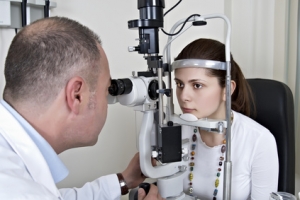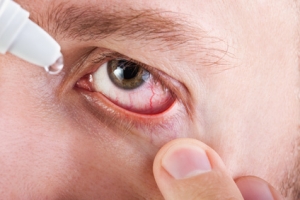Amblyopia (Lazy Eye)
What is Lazy Eye?
Amblyopia, also known as “lazy eye,” is the lack of normal visual development in an eye, despite the eye being healthy. If left untreated, it can cause legal blindness in the affected eye. About 2% to 3% of the population is amblyopic.
Lazy Eye signs and symptoms
Amblyopia generally starts at birth or during early childhood. Its symptoms often are noted by parents, caregivers or health-care professionals. If a child squints or completely closes one eye to see, he or she may have amblyopia. Other signs include overall poor visual acuity, eyestrain and headaches.
What causes amblyopia?
The most common cause […]

 Astigmatism is one of the most common vision problems, but most people don’t know what it is.
Astigmatism is one of the most common vision problems, but most people don’t know what it is. Dry eye syndrome (DES or “dry eye”) is the chronic lack of sufficient lubrication and moisture on the surface of the eye. Its consequences range from minor irritations, to the inability to wear contact lenses and an increased risk of corneal inflammation and eye infections.
Dry eye syndrome (DES or “dry eye”) is the chronic lack of sufficient lubrication and moisture on the surface of the eye. Its consequences range from minor irritations, to the inability to wear contact lenses and an increased risk of corneal inflammation and eye infections. What are Eye Allergies?
What are Eye Allergies?